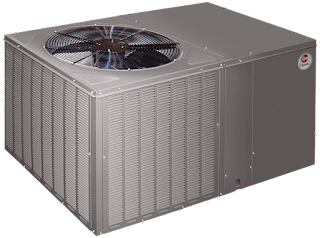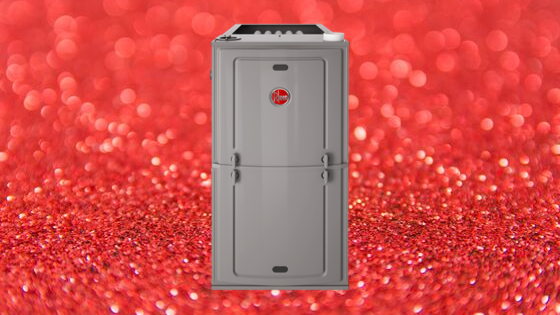How to Understand the Efficiency Rating of a Furnace
Many people wonder how to go about choosing the best furnace for their homes. One important factor to consider is the efficiency rating. Your efficiency rating can have an effect on your energy bill, so it's important to understand how efficient your furnace is going to be before purchasing it. Our heating company at the Lake of the Ozarks found the following information in an article from the U.S. Department of Energy. We think this information can really help people to better understand efficiency ratings on a furnace.
A central furnace or boiler's efficiency is measured by annual fuel utilization efficiency (AFUE). The Federal Trade Commission requires new furnaces or boilers to display their AFUE so consumers can compare heating efficiencies of various models. AFUE is a measure of how efficient the appliance is in converting the energy in its fuel to heat over the course of a typical year.
Specifically, AFUE is the ratio of annual heat output of the furnace or boiler compared to the total annual fossil fuel energy consumed by a furnace or boiler. An AFUE of 90% means that 90% of the energy in the fuel becomes heat for the home and the other 10% escapes up the chimney and elsewhere. AFUE doesn't include the heat losses of the duct system or piping, which can be as much as 35% of the energy for output of the furnace when ducts are located in the attic, garage, or other partially conditioned or unconditioned space.
An all-electric furnace or boiler has no flue loss through a chimney. The AFUE rating for an all-electric furnace or boiler is between 95% and 100%. The lower values are for units installed outdoors because they have greater jacket heat loss. However, despite their high efficiency, the higher cost of electricity in most parts of the country makes all-electric furnaces or boilers an uneconomic choice. If you are interested in electric heating, consider installing a heat pump system.
You can identify and compare a system's efficiency by not only its AFUE but also by its equipment features.
Wall's HVAC Service hopes this article helped you to better understand efficiency ratings on a furnace. If you ever have any confusion trying to understand an efficiency rating on a furnace, call our heating & cooling company at the Lake of the Ozarks. We can be reached at 573-286-4155. Choosing a new furnace can be a difficult choice, consult with one of our experienced HVAC technicians if you have any questions on this big decision.
Understanding the Efficiency Rating of Furnaces and Boilers
A central furnace or boiler's efficiency is measured by annual fuel utilization efficiency (AFUE). The Federal Trade Commission requires new furnaces or boilers to display their AFUE so consumers can compare heating efficiencies of various models. AFUE is a measure of how efficient the appliance is in converting the energy in its fuel to heat over the course of a typical year.
Specifically, AFUE is the ratio of annual heat output of the furnace or boiler compared to the total annual fossil fuel energy consumed by a furnace or boiler. An AFUE of 90% means that 90% of the energy in the fuel becomes heat for the home and the other 10% escapes up the chimney and elsewhere. AFUE doesn't include the heat losses of the duct system or piping, which can be as much as 35% of the energy for output of the furnace when ducts are located in the attic, garage, or other partially conditioned or unconditioned space.
An all-electric furnace or boiler has no flue loss through a chimney. The AFUE rating for an all-electric furnace or boiler is between 95% and 100%. The lower values are for units installed outdoors because they have greater jacket heat loss. However, despite their high efficiency, the higher cost of electricity in most parts of the country makes all-electric furnaces or boilers an uneconomic choice. If you are interested in electric heating, consider installing a heat pump system.
You can identify and compare a system's efficiency by not only its AFUE but also by its equipment features.
Old, low-efficiency heating systems:
- Natural draft that creates a flow of combustion gases
- Continuous pilot light
- Heavy heat exchanger
- 56% to 70% AFUE
Mid-efficiency heating systems:
- Exhaust fan controls the flow of combustion air and combustion gases more precisely
- Electronic ignition (no pilot light)
- Compact size and lighter weight to reduce cycling losses
- Small-diameter flue pipe
- 80% to 83% AFUE
High-efficiency heating systems:
- Condensing flue gases in a second heat exchanger for extra efficiency
- Sealed combustion
- 90% to 98.5% AFUE
Wall's HVAC Service hopes this article helped you to better understand efficiency ratings on a furnace. If you ever have any confusion trying to understand an efficiency rating on a furnace, call our heating & cooling company at the Lake of the Ozarks. We can be reached at 573-286-4155. Choosing a new furnace can be a difficult choice, consult with one of our experienced HVAC technicians if you have any questions on this big decision.
Free estimates available.
Call 573-286-4155 today!
Residential & Commercial Heating and Cooling
Serving Lake of the Ozarks
4 Sample Rd.
Brumley, MO 65017







Comments
Post a Comment